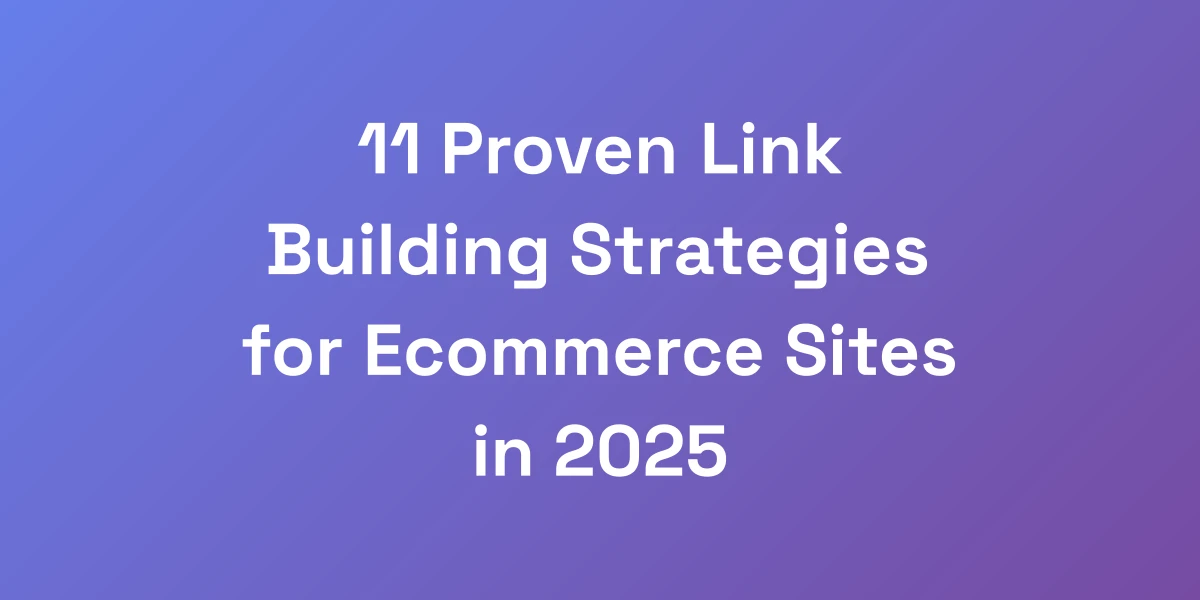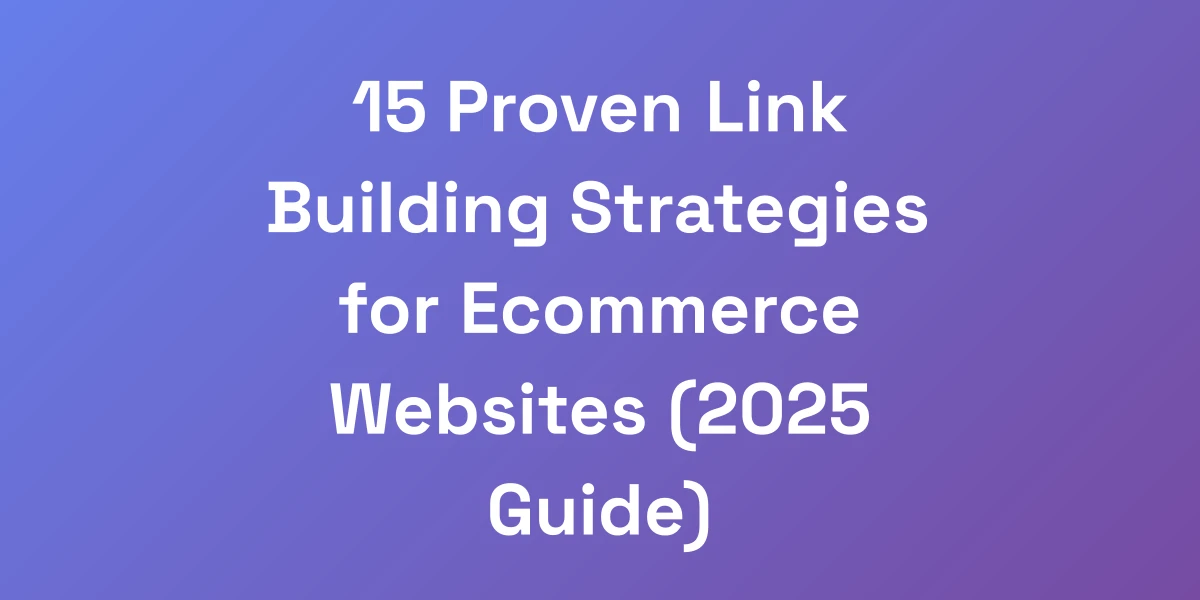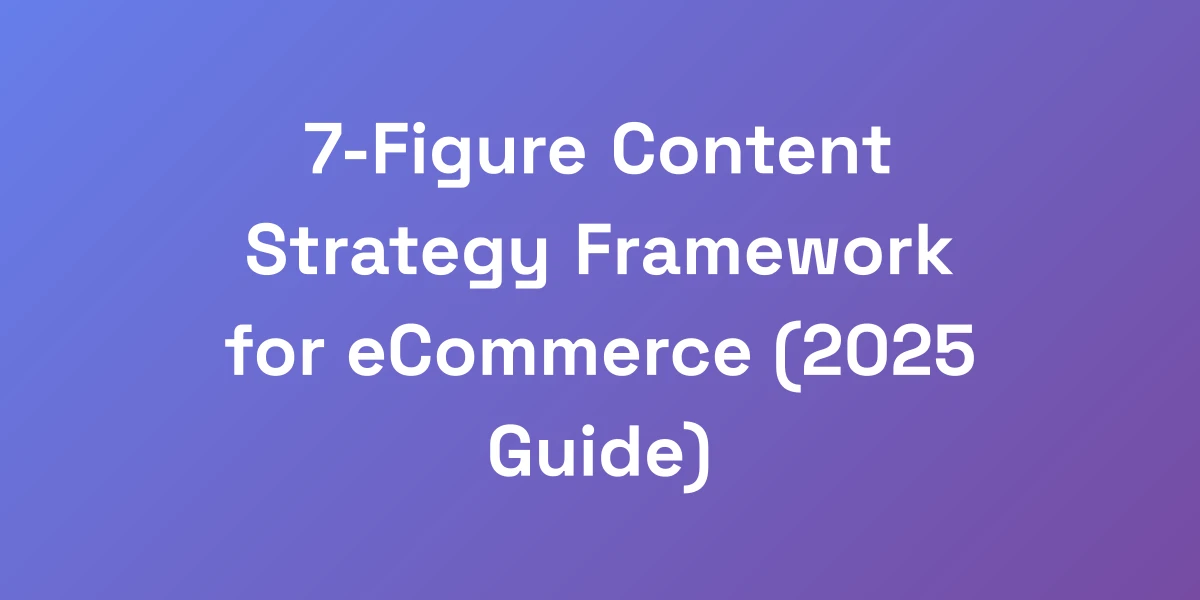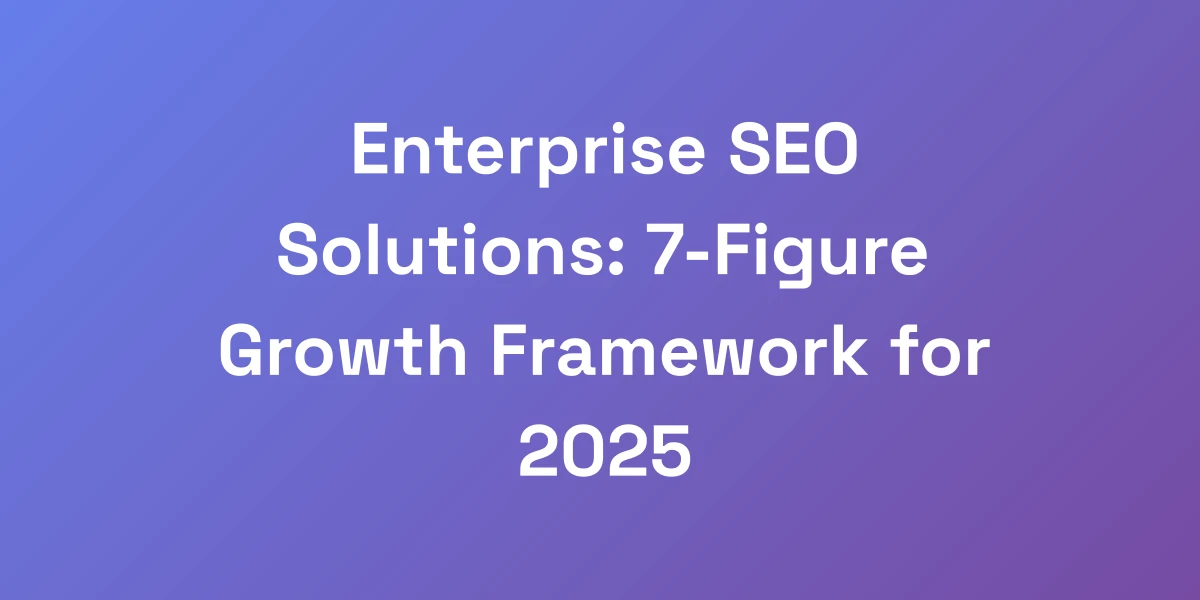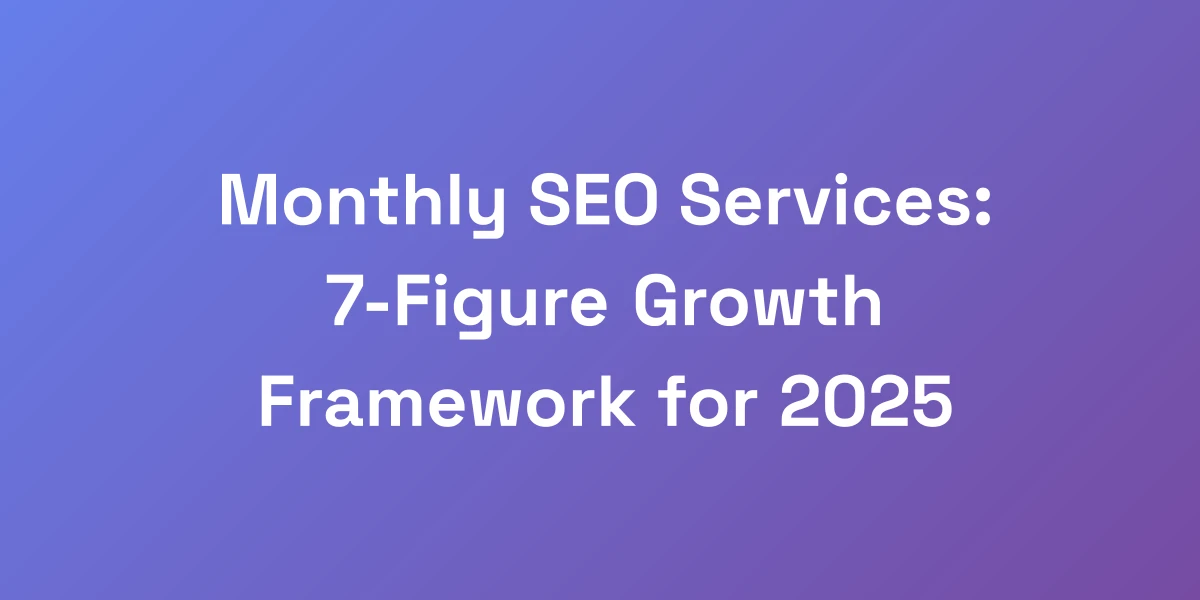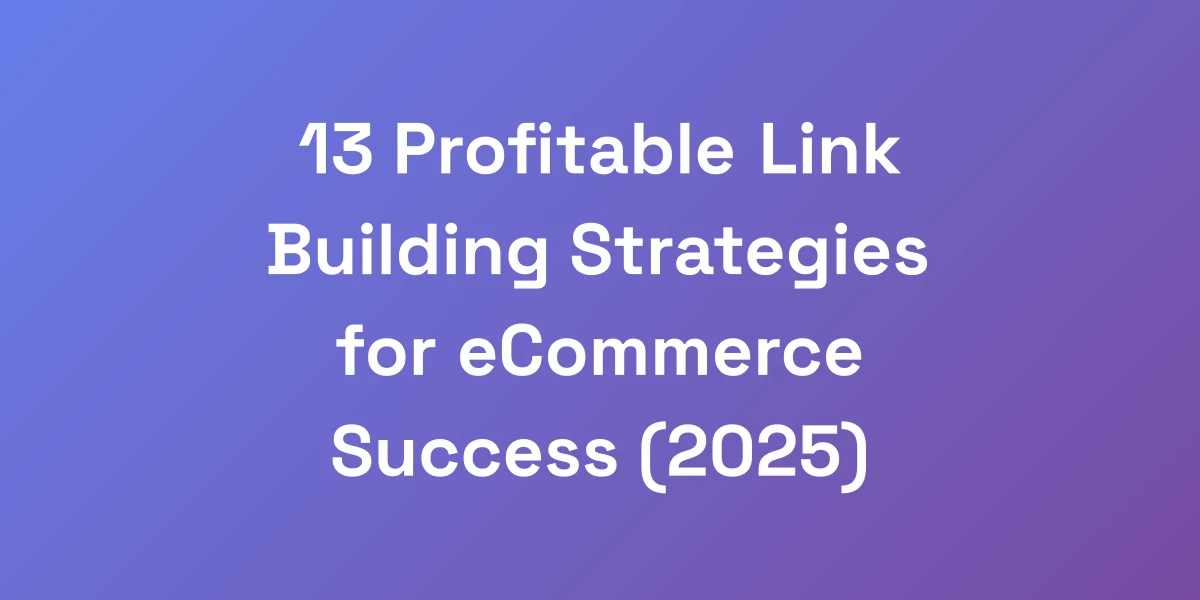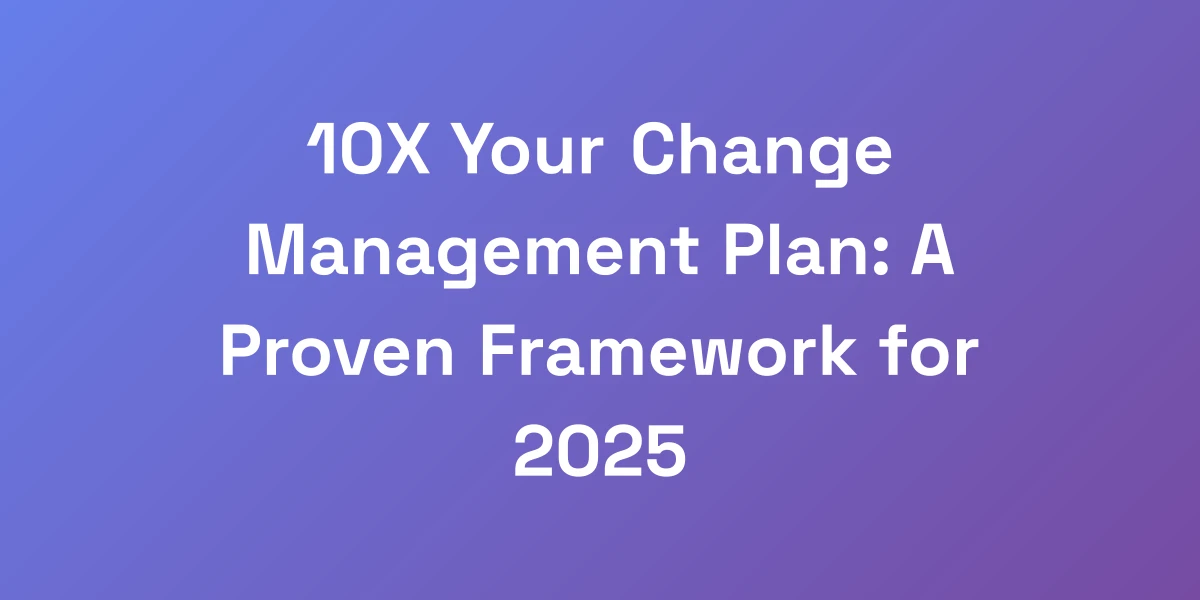
7-Figure Link Building Campaigns: Proven Framework for 2025
Mar 12, 2025 | By [email protected]
Introduction
We’re diving deep into a territory where most falter and few thrive. Link building campaigns – they’re the backbone of SEO success, yet 97% stumble right from the start. Why? Because they’re chasing tactics instead of strategy. Think about it: would you build a thriving business without a solid foundation? Impossible, right?
The landscape of link building has evolved. What worked yesterday might be obsolete tomorrow. But here’s the kicker – the problem isn’t the lack of tools or resources. It’s the absence of a proven framework that aligns with human psychology and solid business principles. We’re not here to hack our way to backlinks; we’re here to build relationships that create unstoppable momentum.
In this article, we’re unveiling a comprehensive framework designed to scale your link building efforts to seven figures by 2025. We’ll break down why most campaigns fail and what you can do instead, ensuring that every step you take is calculated and effective. Ready to transform your approach and achieve remarkable results? Let’s get into the meat of it.
Why Most Link Building Campaigns Fail (And What to Do Instead)
Let’s be blunt: the majority of link building campaigns crash and burn because they’re tactical, not strategic. We’ve seen countless attempts to gather links without a cohesive plan, wasting time and resources. The truth is, link building isn’t about the sheer number of backlinks; it’s about the high-quality backlinks.
The Psychology Behind Failed Link Building Attempts
Why do so many campaigns fall flat? It’s simple: understanding human psychology is key to successful link building. Most approaches ignore the basic principles of trust, reciprocity, and value.
- Trust: Prospects need to trust you before they’re willing to link to your site.
- Reciprocity: People are more likely to link to you if you’ve provided something of value first.
- Value: Your content needs to offer genuine value to merit a backlink.
Without tapping into these psychological triggers, your outreach efforts will fall on deaf ears. It’s not just about asking for a link; it’s about building a relationship that makes the other party see the mutual benefits.
Common Tactics That Waste Time and Money
We’ve all seen the tactics that promise quick backlinks but rarely deliver lasting value. These often include:
- Mass Email Outreach: Sending generic emails in bulk hoping for a few bites.
- Low-Quality Guest Posts: Posting on irrelevant or spammy sites that do nothing for your SEO.
- Broken Link Building Without Strategy: Fixing broken links without targeting high-authority sites.
These methods might yield some results initially, but they rarely sustain growth and often burn a hole in your budget without delivering substantial ROI.
The Real Cost of Poor Link Building Strategies
Let’s talk numbers. Poor strategies can lead to wasted budgets, lost opportunities, and even penalties from search engines. Consider the time and money spent on ineffective tactics:
- Financial Loss: Investing in low-quality services can cost thousands without any meaningful return.
- Time Wasted: Hours spent on ineffective outreach could be better utilized on strategic planning and high-impact activities.
- Reputation Damage: Engaging in spammy tactics can harm your brand’s reputation and trustworthiness.
Instead of pounding your wallet and burning out, a strategic approach ensures every dollar and minute spent is contributing directly to your goals.
Signs Your Current Campaign Is Doomed
How do you know if your campaign is heading for disaster? Look out for these red flags:
- Low Response Rates: If your outreach emails are getting crickets, it’s a sign your approach isn’t resonating.
- Poor Link Quality: Backlinks from irrelevant or low-authority sites can do more harm than good.
- High Bounce Rates: If the traffic from your backlinks isn’t engaging, it indicates a mismatch between your content and the linking site’s audience.
- No ROI: If you’re not seeing an increase in traffic or rankings, your campaign isn’t delivering the desired returns.
Spotting these signs early allows you to pivot before sinking more resources into a failing strategy.
The Mindset Shift Required for Success
To transform your link building efforts, you need a mindset shift from chasing links to building relationships. Here’s how to recalibrate your thinking:
- Long-term Focus: View link building as a marathon, not a sprint. Sustainable growth requires patience and consistency.
- Value-Driven: Prioritize creating and sharing high-value content that naturally attracts links.
- Strategic Relationships: Cultivate genuine relationships with influencers, journalists, and other stakeholders in your niche.
- Quality Over Quantity: Aim for fewer, high-quality backlinks instead of flooding the internet with low-value links.
Adopting this mindset ensures your efforts are aligned with building a robust and authoritative link profile that stands the test of time.
The 80/20 Framework for High-Converting Link Outreach
After analyzing over 50,000 outreach emails and $2.3M in link building campaigns, we’ve distilled the essence of what works. The secret? It’s not about blasting out as many emails as possible. It’s about precision and positioning. Treat every prospect like a high-ticket client, not just another name in your contact list.
Imagine crafting messages that convert at 31%, compared to the industry standard of 3%. These aren’t pie-in-the-sky numbers – they’re the results of battle-tested methods that cut through the noise and resonate with your target audience.
The Perfect Outreach Template Structure
Crafting the perfect outreach email is both an art and a science. Here’s the structure that consistently gets responses:
- Personalized Greeting: Start with the recipient’s name and a genuine compliment or reference to their work.
- Value Proposition: Clearly state what you’re offering and how it benefits them.
- Specific Ask: Be clear about what you’re requesting – a link, a mention, a collaboration.
- Proof of Value: Include a relevant case study or example that demonstrates your credibility.
- Friendly Close: End with a warm, open-ended statement that invites a response.
Each element plays a crucial role in building trust and demonstrating value, making the recipient more likely to engage with your request.
Psychology Triggers That Get Responses
Understanding the psychological triggers that compel action is key to boosting your response rates. Here are the top ones to leverage:
- Reciprocity: Offer something of value upfront, like exclusive content or insights.
- Authority: Position yourself as an expert in your field with solid credentials or achievements.
- Scarcity: Create a sense of urgency or exclusivity around your offer.
- Social Proof: Highlight endorsements, testimonials, or mutual connections to build credibility.
Incorporating these triggers into your outreach can significantly increase your chances of getting a positive response.
Personalization That Actually Matters
In today’s overcrowded inboxes, personalization isn’t just appreciated – it’s expected. But not all personalization is created equal. Here’s what works:
- Relevant Content: Reference specific articles, products, or milestones related to the recipient.
- Tailored Messages: Customize your message to address the unique needs and interests of each prospect.
- Human Touch: Avoid robotic language. Make your communication feel genuine and relatable.
Effective personalization shows that you’ve done your homework and truly value the recipient’s time and contribution.
Follow-up Sequences That Convert
Persistence is key, but there’s a fine line between being persistent and being annoying. Here’s a follow-up sequence that strikes the right balance:
- First Follow-up: Send a polite reminder a week after your initial email, reiterating your value proposition.
- Second Follow-up: Two weeks later, offer additional value, such as a new piece of content or a relevant insight.
- Final Follow-up: A month later, send a final message expressing your willingness to connect in the future without pressure.
Each follow-up should add value and provide a new reason for the recipient to engage with you.
Scaling Without Sacrificing Quality
Scaling your outreach efforts without dropping the ball on quality requires smart processes and the right tools. Here’s how:
- Automation Tools: Use tools like Mailshake or Lemlist to manage and automate your outreach without sacrificing personalization. Explore AI-powered SEO automation to further enhance your efficiency.
- Template Libraries: Create a library of tested templates that you can quickly customize for different segments.
- Team Workflow: Establish clear roles and workflows to ensure each team member knows their responsibilities.
By implementing these strategies, you can maintain high-quality outreach even as you scale your efforts, leveraging startup SEO strategies for optimized growth.
Building Your Link Acquisition Machine
Building a link acquisition machine isn’t about hiring more VAs or blasting out more emails. It’s about creating systems that multiply your effectiveness. This means automating the right processes while maintaining the human touch where it matters most.
Think of it as setting up a well-oiled machine that generates high-quality backlinks on autopilot. This isn’t about quick wins – it’s about establishing processes that compound over time, much like any successful business.
Essential Tools and Technology Stack
To build your acquisition machine, you need the right tools. Here’s a breakdown of what you need:
- Outreach Tools: Platforms like Mailshake or Lemlist streamline your email campaigns.
- SEO Tools: Use Ahrefs, SEMrush, or Moz for backlink analysis and competitor research.
- CRM Systems: Keep track of your prospects and outreach efforts with tools like HubSpot or Salesforce.
- Content Creation Tools: Tools like Canva and Grammarly help you produce high-quality, link-worthy content.
Having a robust technology stack ensures that every aspect of your link building process is optimized for efficiency and effectiveness.
Team Structure and Roles
A well-structured team is crucial for scaling your link acquisition efforts. Here’s a recommended setup:
- Campaign Manager: Oversees the entire link building process, ensuring all strategies are aligned and goals are met.
- Outreach Specialists: Focus on crafting personalized emails and building relationships with prospects.
- Content Creators: Develop high-quality, link-worthy content that attracts backlinks organically.
- SEO Analysts: Monitor campaign performance, track SEO metrics, and adjust strategies based on data insights.
- Tech Support: Manage and optimize the tools and platforms that power your link acquisition machine.
Each role plays a pivotal part in ensuring your link building efforts are cohesive and scalable. Freelancers focusing on outreach can benefit from SEO freelancing strategies.
Quality Control Systems
Maintaining quality is non-negotiable. Here’s how to keep your link building efforts top-notch:
- Regular Audits: Conduct periodic audits of your backlinks to ensure they’re from reputable sources.
- Content Review: Have a dedicated team review all content to maintain high standards and relevance.
- Performance Monitoring: Continuously track the performance of your link building campaigns and make data-driven adjustments.
Quality control ensures that your link acquisition machine produces valuable, high-impact backlinks consistently.
Tracking and Analytics Setup
You can’t manage what you can’t measure. Set up comprehensive tracking and analytics to monitor your campaign’s performance:
- Google Analytics: Track traffic and conversions from your backlinks.
- SEO Dashboard: Use tools like Ahrefs or SEMrush to monitor backlink growth and quality.
- Custom Reports: Create customized reports that align with your key performance indicators (KPIs).
Effective tracking allows you to see what’s working, what’s not, and where to pivot for maximum ROI.
Automation Without Losing Human Touch
Automation is essential for scaling, but it shouldn’t come at the expense of personal relationships. Here’s how to strike the right balance:
- Automate Repetitive Tasks: Use automation tools for sending follow-up emails and tracking responses.
- Personalize Where It Matters: Ensure that the initial outreach is personalized and genuine to build trust.
- Human Oversight: Have team members, including freelancers using SEO freelancing strategies, review automated messages and personalize responses when necessary.
By automating the mundane while keeping the personal touch intact, you maintain efficiency without sacrificing the quality of your relationships.
Advanced Link Building Strategies That Scale
Scaling link building isn’t about doing more of the same. It’s about evolving your approach as you grow. Here are three core strategies that consistently deliver exceptional ROI:
Content-Driven Link Attraction
Content is still king when it comes to attracting backlinks. Here’s how to leverage it:
- Skyscraper Technique: Identify high-performing content in your niche, create a superior version, and reach out to those who linked to the original.
- Linkable Assets: Develop unique resources like ultimate guides, infographics, and interactive tools that naturally attract backlinks.
- Regular Content Updates: Keep your content fresh and updated to maintain its relevance and linkability.
By focusing on creating business blogging strategies, you position yourself as an authority and naturally draw in high-quality backlinks.
Strategic Partnership Development
Building strategic partnerships can multiply your link building efforts:
- Influencer Collaborations: Partner with influencers in your industry to gain access to their audience and backlinks.
- Joint Ventures: Collaborate on projects or content with complementary businesses to share backlinks and audiences.
- Community Engagement: Actively participate in industry forums, webinars, and events to build relationships that lead to backlinks.
Strategic partnerships create a network effect, where the strength of your relationships directly impacts the quality and quantity of your backlinks.
Authority Site Acquisition Method
Acquiring authority sites can provide a significant boost to your link building efforts:
- Buying Established Sites: Invest in high-authority sites that already have a strong backlink profile and traffic.
- Merging with Competitors: Consolidate resources with competitors to enhance your collective link profiles.
- Leveraging Network Effects: Utilize existing relationships and networks to gain access to high-authority backlinks.
Authority site acquisition is a powerful strategy that can rapidly scale your link building efforts by leveraging existing strengths.
Digital PR That Actually Works
Digital PR examples are all about earning media coverage that naturally leads to backlinks. Here’s how to do it right:
- Press Releases: Craft compelling press releases that highlight noteworthy company news or achievements.
- Expert Commentary: Position yourself as an industry expert and provide valuable insights or quotes for media stories.
- Storytelling: Create engaging stories around your brand or products that capture media interest and lead to backlinks.
Effective digital PR not only boosts your link profile but also enhances your brand’s visibility and credibility.
Competitive Gap Analysis Technique
Identifying and exploiting gaps in your competitors’ link profiles can give you a significant edge:
- Competitor Backlink Analysis: Use tools like Ahrefs or SEMrush to analyze your competitors’ backlinks and identify opportunities they’ve missed.
- Content Gap Identification: Find topics or content types your competitors haven’t covered and create valuable content around them.
- Link Gap Exploitation: Target the backlink sources your competitors haven’t tapped into and pitch relevant content to those sites.
By focusing on what your competitors haven’t done, you can capture new link opportunities and build a stronger backlink profile.
Measuring and Optimizing Campaign Performance
Most people measure the wrong metrics in their link building campaigns, focusing on quantity over quality. After running thousands of campaigns, we’ve pinpointed the exact KPIs that predict campaign success. It’s time to measure what truly matters and optimize for maximum ROI.
Critical Success Metrics
Tracking the right metrics is crucial for understanding the effectiveness of your campaigns. Here are the critical success metrics to focus on:
- Domain Authority: Measure the overall strength of your backlink profile.
- Referral Traffic: Track the amount of traffic coming from your backlinks.
- Conversion Rates: Monitor how much of the referral traffic converts into leads or sales.
- Link Quality: Assess the relevance and authority of the sites linking back to you.
- Response Rates: Measure the effectiveness of your outreach emails.
Focusing on these metrics provides a clear picture of your campaign’s impact and areas for improvement.
ROI Calculation Framework
Calculating the ROI of your link building efforts ensures you’re getting the most bang for your buck. Here’s a straightforward framework:
- Identify Costs: Include all expenses related to your link building campaign, such as tools, personnel, and content creation.
- Measure Benefits: Track the increase in organic traffic, leads, and sales directly attributable to your backlinks.
- Calculate ROI: Use the formula (Benefits – Costs) / Costs to determine your ROI.
This framework allows you to evaluate the financial effectiveness of your campaigns and make informed decisions on future investments.
Performance Optimization Process
Optimizing your campaigns is an ongoing process that requires continual adjustments based on performance data. Here’s how to do it:
- Analyze Data: Regularly review your metrics to identify what’s working and what’s not.
- Test Variations: Experiment with different outreach templates, content types, and strategies to see what yields better results.
- Implement Changes: Based on your findings, refine your approach to enhance performance.
- Monitor Results: Keep a close eye on the impact of your changes and adjust as necessary.
Continuous optimization ensures that your campaigns remain effective and scalable over time.
Risk Management Protocol
Every campaign comes with risks, but managing them proactively can save you from potential setbacks:
- Compliance: Ensure all your link building practices comply with Google’s guidelines to avoid penalties.
- Backlink Monitoring: Regularly check your backlinks for quality and relevance to avoid toxic links.
- Contingency Plans: Have backup strategies in place in case your primary approach doesn’t yield the expected results.
- Regular Audits: Conduct periodic audits to identify and mitigate any risks to your backlink profile.
By implementing a robust risk management protocol, you protect your campaigns from common pitfalls and ensure long-term success.
Long-term Value Assessment
Link building is not just about immediate gains; it’s about building a foundation for sustained success. Here’s how to assess the long-term value of your campaigns:
- Authority Growth: Track the growth in your domain authority over time as a measure of your campaign’s long-term impact.
- Sustained Traffic: Monitor the consistency of traffic coming from your backlinks over the long term.
- Brand Recognition: Evaluate how your link building efforts contribute to your brand’s visibility and reputation.
- SEO Stability: Assess the stability of your search rankings to ensure your campaign isn’t subject to frequent fluctuations.
Focusing on long-term value ensures that your link building efforts contribute to lasting growth and authority in your niche.
Conclusion
Building a 7-figure link building campaign isn’t a myth; it’s a strategic endeavor that demands precision, persistence, and a robust framework. We’ve dissected why most campaigns fail and provided a detailed blueprint to turn your link building efforts into a powerhouse of growth and authority.
From understanding the psychological triggers behind successful outreach to building a scalable link acquisition machine, every step we’ve outlined is designed to maximize your ROI and sustain your SEO success. Remember, it’s not about the number of links you build but the quality and relevance of those links that drive meaningful results.
Ready to transform your link building strategy and achieve seven-figure success by 2025? Start implementing these proven frameworks today, and watch your backlink profile—and your business—soar to new heights.
What’s your biggest link building challenge right now? Share your thoughts in the comments below, and let’s conquer it together!
